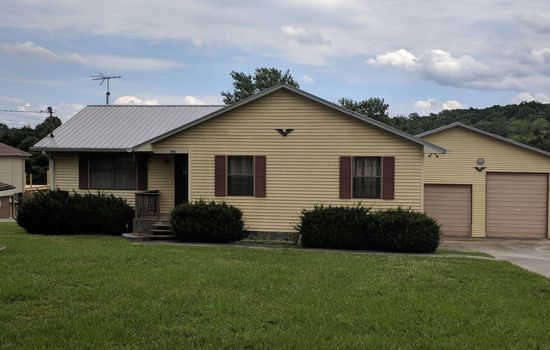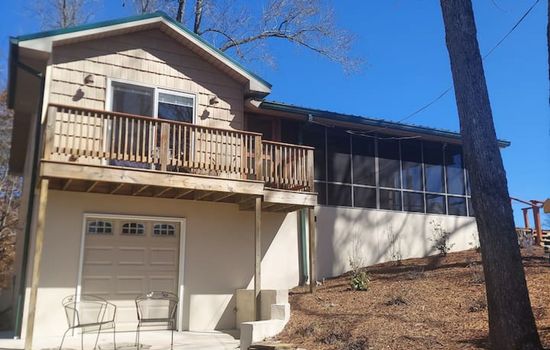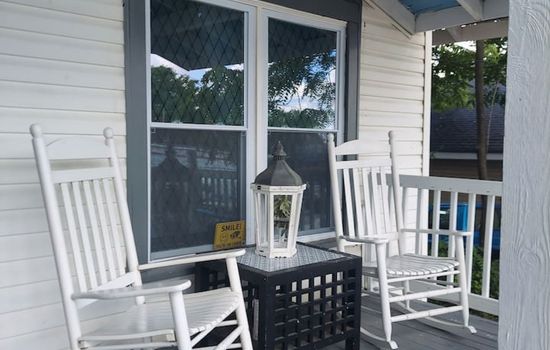The Fall Creek Falls Visitors Center, located at 2009 Village Camp Rd, Spencer, TN 38585, offers information and amenities for park visitors. It operates daily from 8:00 AM to 6:00 PM.
Entrance fees are typically $5 per vehicle for Tennessee residents and $7 for out-of-state visitors. Parking is available near the main attractions.
From Nashville, take Interstate 40 East for approximately 90 miles, then merge onto Highway 111 South. Continue for about 30 miles, following signs to your destination, where breathtaking waterfalls and lush landscapes await.
Fall Creek Falls State Park offers designated RV parking, motorcycle parking, accessible parking spaces, and bike racks for cyclists, ensuring convenient access for all visitors.
Accessibility & permits
Emergency
- Cell service availability:Full
Information not accurate?
Help us improve by making a suggestion.
Fall Creek Falls State Park in Tennessee offers an exquisite escape into nature’s grandeur, making it a must-visit destination for discerning travelers. With its breathtaking waterfalls, lush forests, and diverse wildlife, the park showcases the best of the Appalachian landscape. Visitors can wander through miles of hiking trails that lead to stunning vistas and serene spots perfect for reflection.
The crown jewel, Fall Creek Falls, plunges an impressive 256 feet, creating a mesmerizing spectacle that captivates all who behold it. The park’s tranquil atmosphere invites guests to unwind, whether they are picnicking by the water’s edge or exploring the vibrant foliage that transforms with the changing seasons. Outdoor enthusiasts will appreciate the variety of activities available, from rock climbing to fishing in the pristine lakes.
For those seeking a touch of luxury, the park offers charming accommodations, including well-appointed cabins that provide a perfect blend of comfort and rustic charm. Fall Creek Falls State Park is not just a destination; it is an experience that rejuvenates the spirit and inspires a deeper connection with nature.
Top 3 Facts about Fall Creek Falls State Park
During autumn, the park becomes a spectacle as rare migratory birds, such as the golden-winged warbler, pass through, while unusual sightings of elusive creatures like the eastern box turtle delight visitors, highlighting the region’s unique biodiversity and the importance of preserving these habitats for future generations.
Nestled in the Appalachian region, this park experiences unique microclimates due to its varied elevation, leading to diverse weather patterns; for instance, temperature differences can be drastic, with cooler, misty conditions at higher altitudes contrasting sharply with warmer, sunnier valleys below, creating a fascinating ecological tapestry.
Renowned for its stunning waterfalls, this park features the bizarrely named “Piney Falls” trail, while records show it boasts the tallest waterfall in Tennessee; unusual park rules prohibit swimming in certain areas, ensuring safety amidst the breathtaking natural beauty and diverse outdoor activities.
Family programs
- Junior Ranger
- Ranger-led Tours
- Self-guided Tours
- Workshops & Hands-on Activities
- Living History & Cultural Demos
- Scavenger Hunts
- Night Sky & Astronomy
- Family Camping & Overnight
- Volunteer & Stewardship
- Youth Conservation
- Scouting Partnerships
- Virtual Junior Activities
- Arts & Crafts
- Water-based Adventures
Travel Tips
Plan Ahead
To fully enjoy your visit, plan ahead by checking trail conditions and weather forecasts. Arrive early to secure parking, especially on weekends, and consider packing a picnic to savor amidst the stunning scenery. Don’t forget to bring plenty of water and sturdy footwear for exploring the diverse landscapes, ensuring a memorable experience in this natural wonder.
Pack Appropriately
When packing for your trip, don’t forget to include a lightweight rain jacket, as sudden showers can sweep through the area, especially in spring and fall. Additionally, bring sturdy hiking shoes to navigate the diverse terrain, from rocky trails to lush forest paths, ensuring you’re prepared for both adventure and comfort as you explore the stunning waterfalls and vistas.
Respect Wildlife
When exploring the stunning landscapes of this Tennessee gem, prioritize wildlife respect. Keep a safe distance from animals, refrain from feeding them, and observe their natural behaviors quietly. This not only ensures your safety but also helps preserve the delicate balance of the ecosystem. Bring binoculars for a closer look, and remember, a respectful visitor enhances the experience for everyone.
Stay Informed
Before your visit, stay informed by checking the weather forecast, current temperatures, and any fire bans or notices. Make sure to know emergency contact information and share your plans with someone, including where you’re going and your expected return time, to ensure a safe and enjoyable experience.
Seasons
Spring’s arrival transforms the park into a vibrant tapestry of blooming wildflowers and lush greenery, inviting visitors to explore its cascading waterfalls and verdant trails.
Summer’s warm embrace invites visitors to explore cascading waterfalls, hike diverse trails, and enjoy refreshing lake activities, making June through August the perfect time to experience the park’s natural beauty.
In autumn, the park’s vibrant foliage and cascading waterfalls create a picturesque backdrop for hiking, photography, and relaxation, with September through November offering ideal conditions for these activities.
Experience the serene beauty of Tennessee’s winter landscapes with snow-covered trails, festive holiday events, and cozy lodge accommodations, making December through February the perfect time to visit.
Information not accurate?
Help us improve by making a suggestion.
Where to stay
Frequently Asked Questions
Ready to dive into what Fall Creek Falls State Park has to offer? Let’s tackle some of the burning questions you might have as you plan your visit!
-
The park’s operating hours are from 8:00 AM to 8:00 PM daily, allowing ample time for visitors to explore the natural beauty of Fall Creek Falls State Park.
-
Pets are allowed on trails but must be kept on a leash at all times. Please be mindful of cleaning up after your pet to maintain the park’s cleanliness.
-
To reserve a campsite, you can visit the official Tennessee State Parks website or call the park office directly. Reservations are recommended, especially during peak seasons, to ensure you secure your desired spot.
-
A valid Tennessee fishing license is required for all anglers aged 13 and older. Licenses can be purchased online or at local retailers. Be sure to check specific regulations for the park regarding fishing locations and species.
-
Yes, there are wheelchair-accessible trails at Fall Creek Falls State Park, including the paved trail leading to the falls overlook, making it easier for everyone to enjoy the stunning views.








